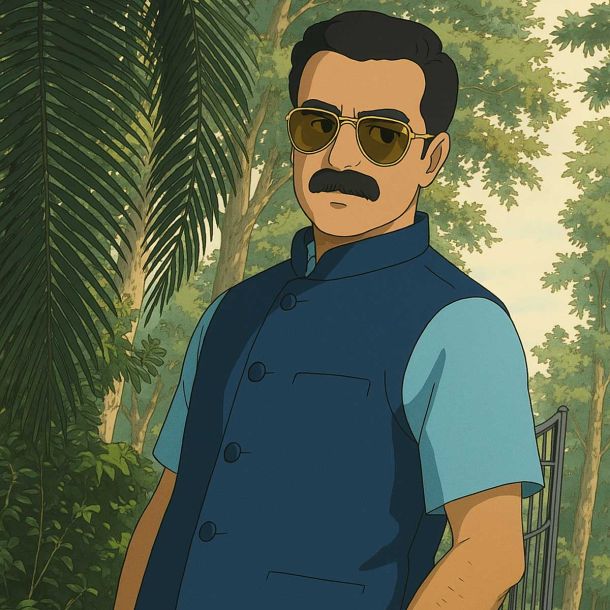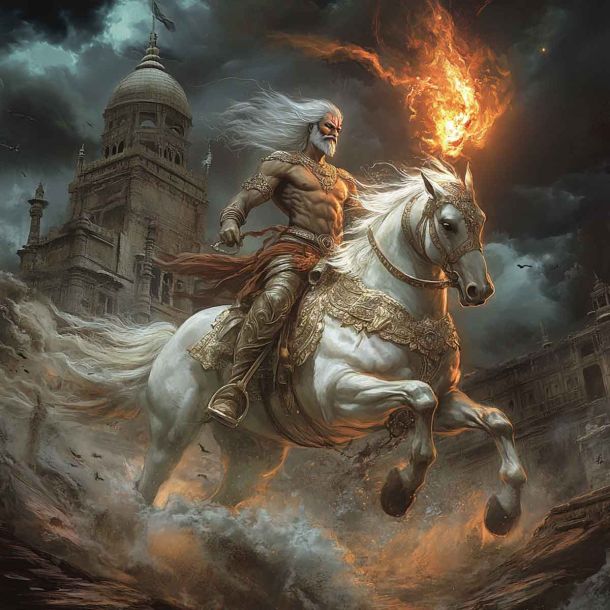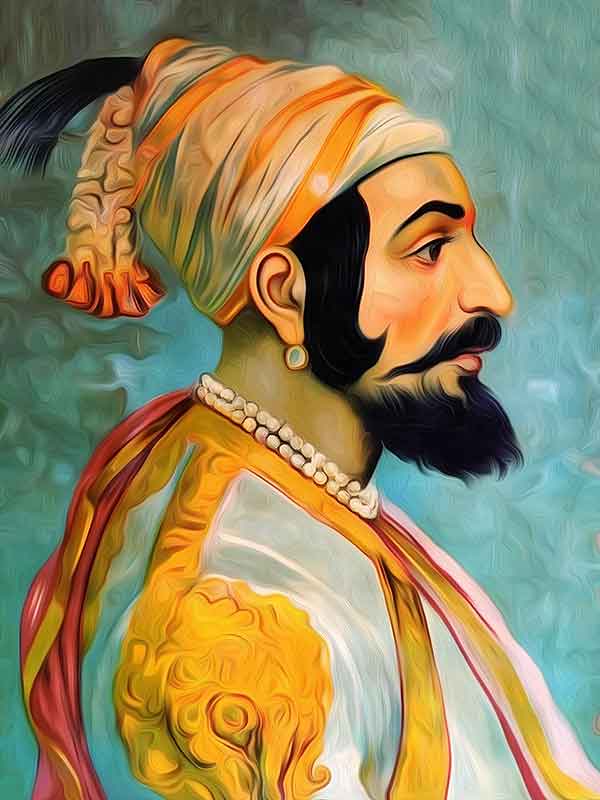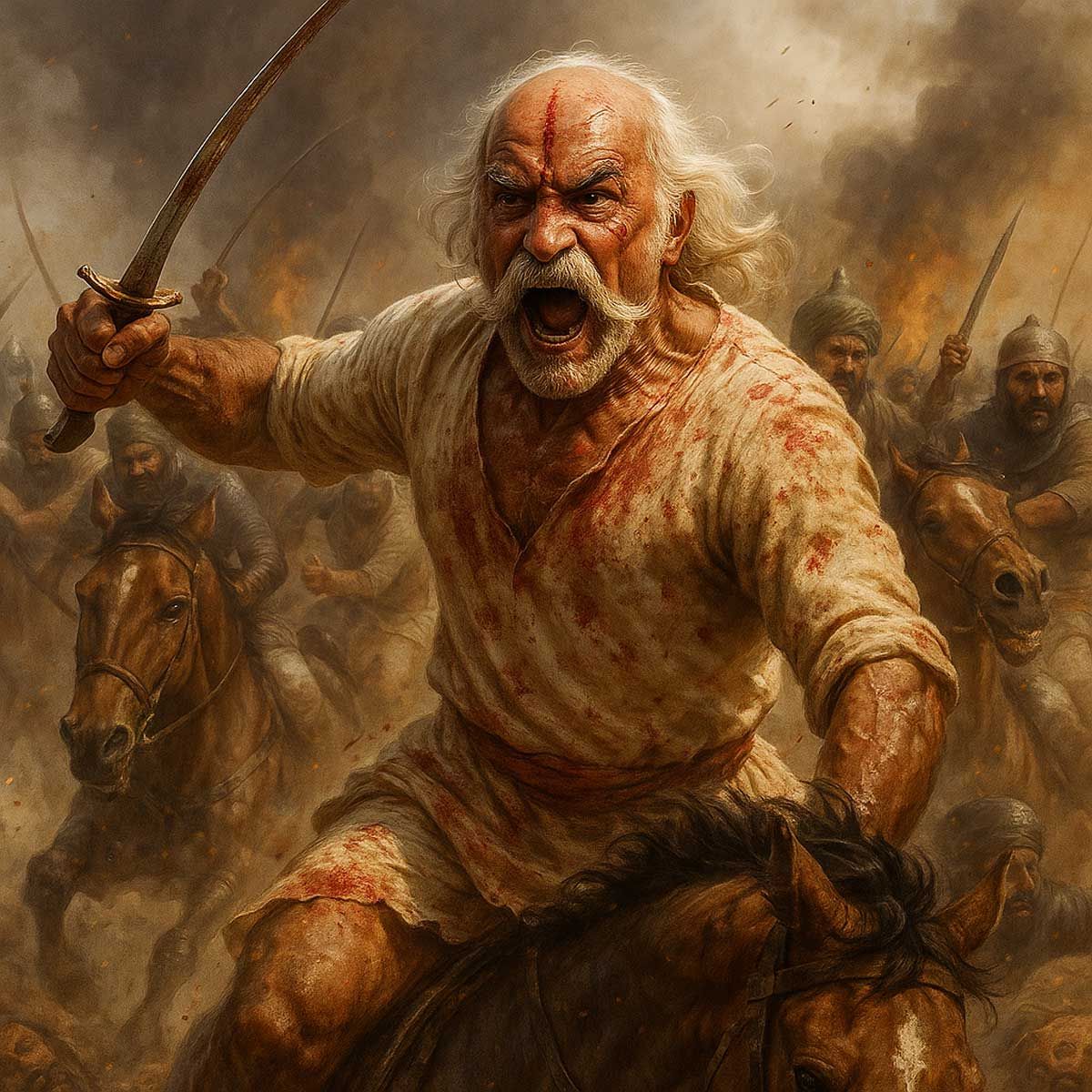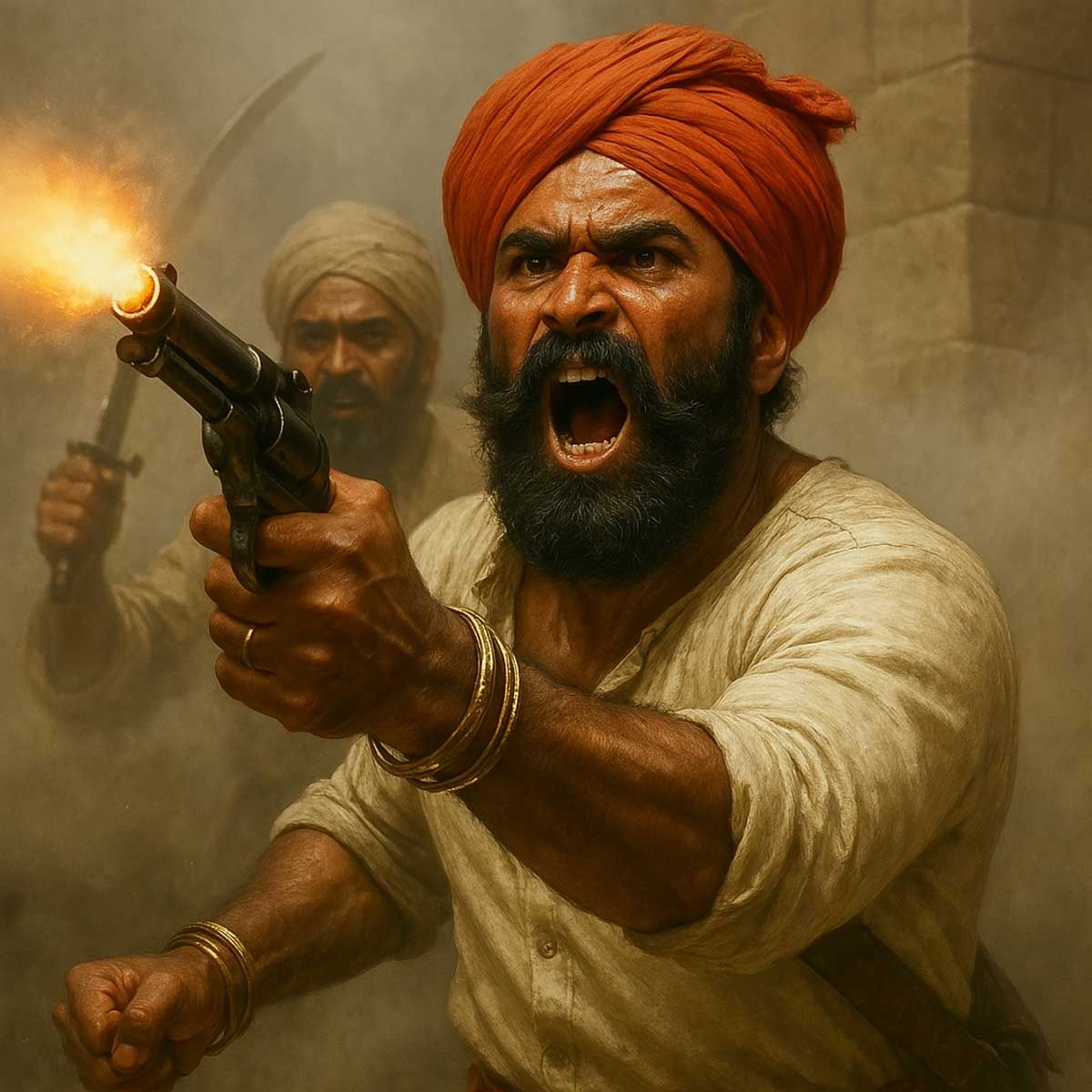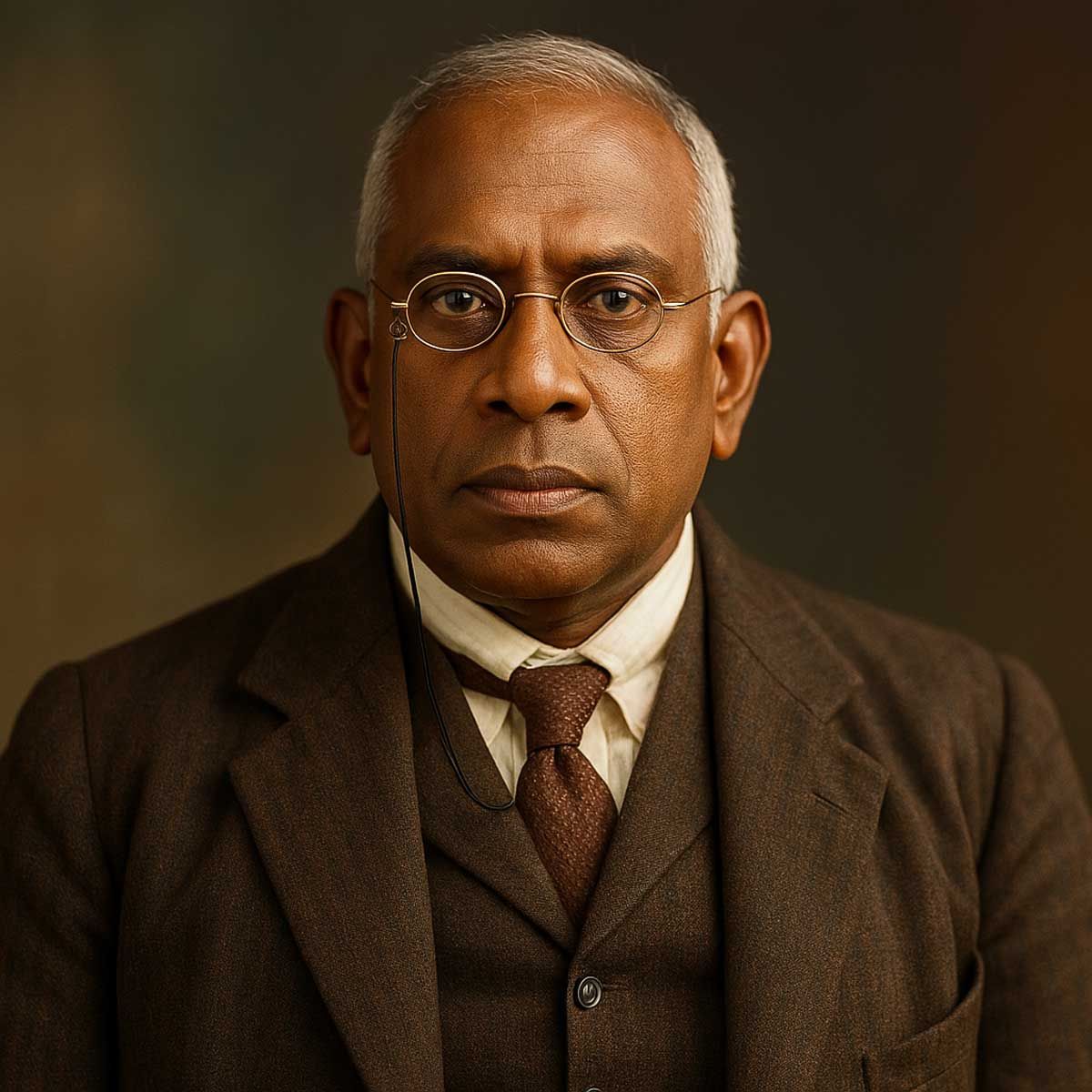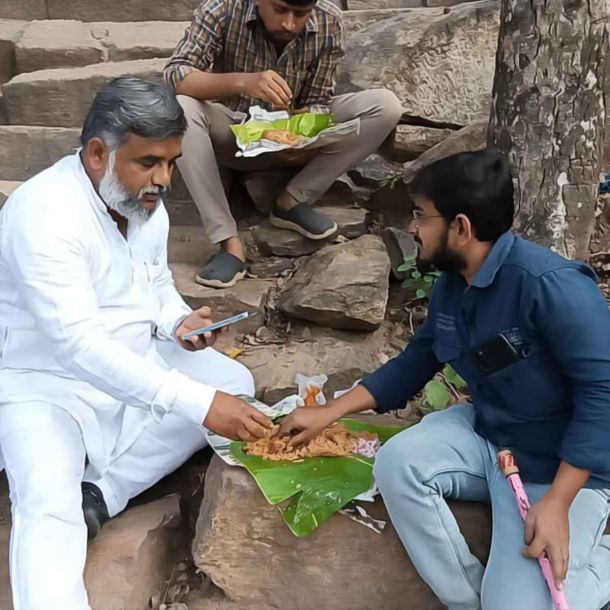More Coverage
Twitter Coverage
Satyaagrah
Written on
Satyaagrah
Written on
Satyaagrah
Written on
Satyaagrah
Written on
Satyaagrah
Written on
Join Satyaagrah Social Media
In 1528, Pandit Devideen Pandey fought with his head split open, tied his turban, killed 700 Mughals to save Ram Janmabhoomi, and died fighting—500 years later, his courage lives on as Ram Mandir stands where he fell, fulfilling a vow of blood and faith
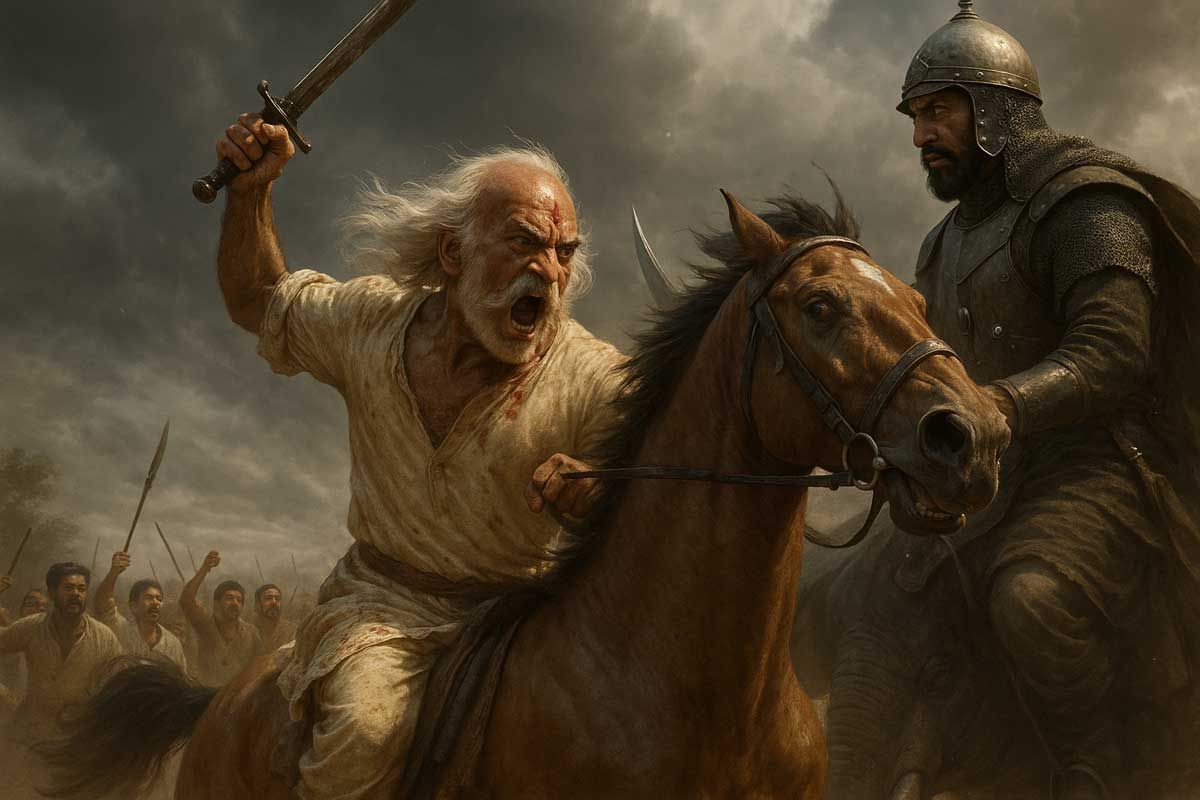
In 1528, India experienced one of the most tragic moments in its spiritual history. After asserting control over North India, Mughal emperor Babur sent his trusted general Mir Baqi to Ayodhya—not to rule, but to destroy. His destination was not a palace, but the Ram Janmabhoomi, the sacred birthplace of Lord Ram, revered by Hindus across the land.
|
Mir Baqi, acting on orders, launched a violent and symbolic assault on the temple. His mission was designed to crush more than stone—it aimed to break the spirit of an entire civilization. Folk and traditional accounts speak of Raja Mahtab Singh, the ruler of Bhiti, who rose in defiance. Despite being heavily outnumbered, he led a force of 175,000 defenders against Babur’s army of 450,000. For seventy days, this small but determined kingdom held its ground.
Eventually, the defenders were overwhelmed by cannon fire and sheer numbers. The sacred temple was demolished, and the Babri Masjid was built in its place—a structure that would go on to ignite centuries of legal, spiritual, and political battles. British-era documents mention a horrifying line: “the mosque’s mortar was mixed with Hindu blood due to the massacre of devotees.” These haunting words echo the depth of the tragedy and still stir grief among the faithful.
Adding weight to this painful history, a Persian inscription on the mosque confirmed what people already knew—Mir Baqi had constructed the mosque under the command of Babur. It was not just the loss of a structure—it marked the beginning of a long and painful campaign to reclaim the holy site.
But in this darkest of hours, a light emerged—Pandit Devideen Pandey, also known as Devi Din Pandey. Among the countless who resisted, his name stands tall—not just for his devotion, but for his brave actions.
Born in the village of Sanethu (sometimes referred to as Sissinda in Rajepur) near Ayodhya, Pandey came from a Saryupareen Brahmin family. He was a deeply spiritual man—not a warrior, but a priest. He spent his days reciting scriptures, guiding villagers, and performing religious rituals. But 1528 changed him forever.
When news spread that the temple had fallen to the Mughals, Pandit Devideen Pandey was devastated. Pandit Devideen, from the village of Sanethu in Ayodhya, was born into a Saryupareen Brahmin family. Though he was a devout priest, when the Mughal army advanced toward Ayodhya intending to destroy the Ram Temple, Pandit Devideen Pandey set aside his priestly duties. The pain was unbearable. Silence was no longer an option. Inspired by the selfless resistance of Raja Mahtab Singh, Pandey decided to act.
He moved fast. As per oral history and the 1930s booklet Shri Ramjanmbhoomi ka Romanchkari Itihaas (The Thrilling History of Ram Janmabhoomi), Pandit Devideen raised a force from nearby villages. These were not trained soldiers—they were farmers, teachers, common men—but they believed in one cause: the defense of their Lord’s birthplace. “He rallied 10 thousand of villagers.”
The Battle for Ram Janmabhoomi Begins
On June 3, 1528, Pandey and his volunteer force launched a bold attack on the Mughal camp at the temple site. On June 3, 1528 (as per the traditional date), Pandey’s makeshift army launched an attack on the Mughal detachment guarding the disputed site. They carried bows and swords, while the Mughals had cannons and guns. But what they lacked in weapons, they made up for in faith. Despite being heavily outnumbered and facing trained Mughal troops armed with guns and cannons, Pandey’s militia fought with swords, bows and unwavering faith.
The battle lasted for five days. Every street in Ayodhya turned into a battlefield. Temples became fortresses. For Pandey and his men, Ram Janmabhoomi was not just a piece of land—it was their soul. Pandey himself led from the front, refusing to back down even when severely wounded.
On the fifth day, the clash reached its peak. Pandey was hit on the head by a stone or brick, leaving his skull split open and blood pouring down his face. But instead of retreating, he tied his turban around his bleeding head and continued fighting. In a moment that became legendary, “Mounted on horseback, he charged directly at the Mughal commander Mir Baqi, who was atop a war-elephant. The elephant fell. Pandey managed to strike down Mir Baqi’s elephant, causing the beast to collapse and killing its mahout.”
What followed was betrayal. “At that moment of chaos, the Mughal general resorted to subterfuge: hiding in the fallen howdah, Mir Baqi drew his matchlock gun and shot Pandit Devideen Pandey from cover.” A cowardly act, fired not from courage, but desperation. The bullet found its mark. Pandey collapsed on the battlefield—his blood seeping into the soil of Ayodhya.
Legend says that before falling, he cut down 700 Mughal soldiers on his own. Family accounts and Romanchkari Itihaas preserve this number. Babur’s own memoir Tuzk-e-Babri supposedly recorded this too, though this reference remains elusive in preserved versions.
“Nearly all of Pandey’s comrades perished around him in battle.” Some accounts say “roughly 10,000 Hindu fighters were killed in the engagement.” Pandit Devideen fell at the very place where the temple’s sanctum once stood—a fitting place for a final breath. The date and time of his martyrdom are even preserved in folklore: 9 June 1528, at 2 p.m., Pandit Devideen Pandey ‘breathed his last’ on the blood-soaked soil of Ayodhya.
Mughal cruelty did not stop with death. As stories passed through generations, “the Mughals, as the tale goes, mutilated many of the bodies of the fallen defenders in the aftermath – an act meant to terrorize the local population.”
Even in defeat, Pandey’s sacrifice left a spark. “His sacrifice lit a spark of resistance in the region.” His last rites were conducted at Vilahari Ghat on the banks of the Saryu, as per Brahmin tradition. But Pandey’s legend did not end with his death. His family, his relics, and the land itself keep his memory alive.
His descendants still live in Sanethu/Rajepur, now in their seventh generation. They speak with pride of their ancestor and guard the relics he left behind—his worn sword, scarred from the fight, wrapped in saffron cloth, a sacred relic of their lineage.
Visitors to Ayodhya can still see a piece of this legacy: a heavy iron spear believed to be Pandey’s, still embedded in the wall of the Hanumangarhi temple. Pilgrims bow their heads in reverence when they pass it.
|
The Flame of Resistance: Ayodhya’s Unyielding Spirit from 1529 to the 17th Century
The martyrdom of Pandit Devideen Pandey in 1528 was not the end of the struggle for Ram Janmabhoomi—it was the beginning of a prolonged and determined resistance. His sacrifice ignited a fire in the hearts of nearby chieftains and common folk, inspiring them to continue the fight against the Mughal forces.
Within weeks of Pandey’s fall, a new army rose to avenge the desecration of the sacred site. Raja Ranvijay Singh of Hansawar, a Suryavanshi Rajput king, led this force. He marshaled 25,000 troops and launched a fresh assault on Mir Baqi’s garrison. The people’s anger had not subsided; it burned with the memory of Pandey’s blood soaking the garbh-griha of the temple. According to traditional records, “around 15 days after Pandey’s martyrdom (in early 1529, per the accounts), Ranvijay Singh’s forces attacked the occupying Mughals.” The battle that ensued was fierce and lasted ten days. “A fierce 10-day war ensued in Ayodhya.” These defenders fought not only for land but for honor and devotion.
Despite their valor, Raja Ranvijay and his men ultimately met the same fate—fighting to the last man. The king himself was martyred in battle, along with his entire army. Ayodhya’s soil was said to have been reddened yet again with the blood of thousands of defenders.
The resistance did not end with the men. In this climate of sacrifice, even the women of the region took up arms. One woman stood above all—Rani Jayraj Kumari, the widow of Raja Ranvijay Singh. “Rani Jayraj Kumari, the widow of Ranvijay Singh, is revered in folklore as a warrior queen who refused to concede defeat after her husband’s death.” With astonishing bravery, she reportedly formed a guerrilla band of 3,000 women soldiers and continued harassing the Mughal occupiers of Ayodhya.
Her efforts were not isolated. She was aided by her spiritual mentor, Swami Maheshwarananda, a Hindu ascetic who also organized a fighting force of sadhus (holy men). “Swami Maheshwarananda rallied 24,000 Hindu sannyasis and volunteers from various akharas (monastic orders) to join the armed campaign.” The combined strength of the Rani’s female regiment and the Swami’s army of monks led to a powerful resistance during the reign of Babur’s successor Humayun (1530–1556). “Throughout the reign of Babur’s successor Humayun (1530–1556), these warriors – the Rani’s female regiment and the Swami’s monk militia – launched repeated attempts to seize the holy site.”
In one of these attacks, the resistance fighters even succeeded in briefly recapturing Ayodhya, driving out the Mughal guards. For a short period, the celebratory cries of victory rang out, and worship was restored at the Janmabhoomi.
But the Mughals were not done. Their army returned, larger and more determined than before. “Within a month, Emperor Humayun dispatched a large army to retake Ayodhya.” A massive clash unfolded, in which Rani Jayraj Kumari’s women warriors and Swami Maheshwarananda’s ascetics fought valiantly but were ultimately overwhelmed. Their courage was unmatched, but the Mughals had superior numbers and firepower.
The reprisal was devastating: “in this final confrontation, an additional 24,000 Hindu fighters and 3,000 warrior women lost their lives on the battlefield, and Ayodhya was recaptured by the Mughal Empire, and the brief Hindu hold over the site was extinguished once more.”
And what of Rani Jayraj Kumari? The Rani herself is said to have attained veergati (martyrdom), though legends differ on whether she fell in battle or survived to continue guerrilla actions for some time.
But one thing is clear. “The collective memory speaks of wave after wave of sacrifice – with each failed attempt, another leader would rise to continue the fight.”
By the time the Mughal throne passed to Emperor Akbar (1556–1605), nearly three decades of intermittent conflict over Ayodhya had severely weakened the occupying forces, according to the traditional narrative.
Akbar, known for his policy of religious accommodation, reputedly took note of the unceasing rebellions and the toll they exacted on both sides. Akbar’s advisors (including Hindu ministers like Raja Birbal and Todar Mal) counseled him to make a conciliatory gesture to pacify the devout Hindus.
In a rare compromise, “Akbar thus allowed a small shrine to be built near the mosque – essentially a makeshift temple platform (chabutra) within the Babri Masjid complex. This structure, though modest, was meant to symbolize the recognition of the site’s sanctity to Hindus.”
Indeed, later historical records confirm that by the 18th–19th centuries, Hindus worshipped on a platform in the mosque’s courtyard (believed to mark Lord Ram’s birthplace), while Muslims prayed inside the mosque proper. That small Ram Chabutra became the only place for Hindus to connect with their deity.
The peace did not last long. When Aurangzeb became emperor in 1658, a new wave of destruction began. Known for his hardline stance against non-Islamic traditions, “Aurangzeb (r. 1658–1707), who was far less tolerant of Hindu religious sites, conflict reignited.”
The legends hold that Aurangzeb—a zealous iconoclast—launched at least ten campaigns in Ayodhya aimed at rooting out ‘kafirs’ and demolishing temples.
It is said that whatever new shrines or idols had been installed by Hindus in and around Ayodhya since Akbar’s time were systematically destroyed by Aurangzeb’s orders.
Even Ram Chabutra, the small platform honoring Ram’s birthplace, had been targeted by Aurangzeb. According to Ayodhya’s traditional tales, this period was one of relentless attack—every attempt to worship, remember, or rebuild was met with force.
The folklore of Ayodhya thus extends the saga of struggle all the way through the Mughal era: from Babur and Humayun’s fierce battles to a brief respite under Akbar, and then renewed destruction under Aurangzeb.
By the eighteenth century, the Mughal Empire waned, and local Hindu chiefs (as well as Nawabs of Awadh) held sway in the region, setting the stage for new developments under colonial rule.
The sacrifice of Pandit Devideen Pandey in 1528 did not mark the end of the resistance for Ram Janmabhoomi—it ignited a flame that burned through the centuries. According to traditional Hindu accounts, “in total 76 to 78 battles were fought over the Ram Janmabhoomi site between the 16th century and Indian Independence.” These numbers are not just records—they are wounds, memories, and honors.
“Every generation, it is said, gave rise to new warriors who tried to reclaim the sacred ground.” A compiled count shows “4 battles in Babur’s time, 10 under Humayun, 20 under Akbar, 30 under Aurangzeb, a handful under later Nawabs, two under British rule, and even two in modern independent India.”
Even during British colonial rule, the flame of resistance flickered on. “For example, in 1855, a violent confrontation did occur at Hanuman Garhi temple in Ayodhya between a Muslim group and Hindu sadhus, which ended in a Hindu victory and subsequent British intervention.” And again in 1858, not long after the Indian Rebellion, a group of Nihang Sikhs reportedly tried to occupy the Babri Masjid, resulting in a police case. “On November 30, 1858, a police report is filed by Mohd. Salim against a group of Nihang Sikhs for conducting rituals inside the Babri Masjid.”
|
Echoes Through Time: Oral Traditions and Cultural Retellings
The story of Pandit Devideen Pandey, and the many others who gave their lives defending Ram Janmabhoomi, did not fade away with the passing of centuries. Instead, it was lovingly preserved and carried forward by those who believed in the power of memory and the importance of sacrifice. Ayodhya’s people did not need books or newspapers to remember him—his name lived on in songs, in stories, and in sacred vows.
Over the centuries, the saga of Pandit Devideen Pandey and the other Ayodhya martyrs has been kept alive largely through oral tradition, folk songs, and later written retellings. From one generation to the next, stories were passed down by bards, family elders, and temple priests, ensuring that even as the world changed, Ayodhya’s martyrs would not be forgotten. Bards and family storytellers passed down the tales of these battles as part of the collective memory of Ayodhya’s devotees.
One of the most powerful symbols of this cultural memory was a vow taken by the warriors who defended Ram Janmabhoomi. In a poem attributed to a local poet named Jayaraj, the oath is remembered:
“Till the janmabhoomi (birthplace) is liberated, we will not use an umbrella, nor wear leather shoes, nor tie the turban on our heads.”
This wasn’t just poetic language. It was a commitment made by men who believed in the dignity of sacrifice. The turban, or pagdi, was a mark of honor—especially for the Rajput warriors. By choosing not to wear it until the temple was restored, they expressed their grief, their humility, and their devotion.
“This vow underscores the depth of their commitment – they symbolically renounced comforts and signs of status (the pagdi, or turban, being a mark of honor for Rajputs) until Lord Ram’s home was restored.”
Even today, the Suryavanshi Thakurs—a Rajput clan that claims descent from Lord Ram’s solar dynasty—continue to uphold this history. “Indeed, the community of Suryavanshi Thakurs (Rajputs claiming descent from Ram’s Solar dynasty) in the Ayodhya region still recounts that their forefathers assembled at Surya Kund (a sacred pond) before marching to war in 1528, and there swore this very oath.” And what is most remarkable is that “many of their descendants upheld this vow for generations, refraining from wearing turbans or shoes for nearly 500 years as a mark of penance and hope.”
Such a long-standing commitment is rare in history. But Ayodhya’s resistance wasn’t just about remembering—it was about living those memories.
In addition to Devideen Pandey, local history books and oral legends continue to honor numerous other heroes. “Local history books and legends also preserve the names of numerous unsung heroes of these conflicts.” One of the key sources often referenced is a 90-year-old booklet written by Ram Gopal Visharad. “Ram Gopal Visharad’s account (a 90-year-old booklet often cited by temple activists) lists at least 18 warriors who ‘sacrificed their lives for the liberation of Ram Janmabhoomi.’” These were not only Brahmins like Devideen Pandey, but also Rajput chiefs and nobles from nearby villages.
Names such as Thakur Gajraj Singh of Sarairasi, Kunwar Gopal of Rajepur, and Thakur Jagdamba Singh of Sirsinda are proudly remembered. “Apart from Devideen Pandey (who was a Brahmin and a spiritual leader), many were Rajput nobles or chiefs from nearby villages.” The families of these warriors still reside in their respective villages, and they proudly maintain their genealogies and ancestral stories, passing them on like heirlooms.
Among them, Thakur Gajraj Singh’s story stands out. “Oral lore among the Thakurs describes Gajraj Singh as a seven-foot-tall warrior in his twenties who led 90,000 kinsmen into battle; it is said he fought 29 battles with Mir Baqi’s army and fell in the 30th assault.” His home, struck by Mughal cannon fire, still holds ruins that stand as silent witnesses to the past. “His ancestral home was even targeted by Mughal cannon fire, and ruins (like an old well) believed to be from his time still exist in Sarairasi, tended by his descendants.” These stories are not merely war tales; they are about bravery, sorrow, and identity—tales that continue to inspire.
In the rich oral tradition of Ayodhya, there are also stories of divine intervention. During the battles for the temple, local legends tell of monkeys, seen as agents of Lord Hanuman, descending into Mughal camps and causing chaos. “One legend recounts that one day during the fighting, an army of monkeys (considered to be agents of Lord Hanuman) descended upon the Mughal camps, wreaking havoc: these monkeys supposedly engaged the Mughal soldiers for hours and even managed to silence their guns and cannons temporarily.” These narratives mirror the Ramayana, where Lord Ram’s Vanara Sena fought against evil. The people believed that just like in the epic, the monkeys came once more to defend Ram’s abode.
There are also tales of ascetics who took up arms—not swords or spears, but iron tongs (chimta). These monks, armed only with what they used in rituals, stood against Aurangzeb’s army. “One narrative claims 10,000 ‘tong-wielding’ monks challenged the might of Emperor Aurangzeb’s army and even won a victory using their simple tongs as weapons.”
While these accounts strain credulity, they serve a symbolic purpose: reinforcing the belief that dharma (faith) can triumph against overwhelming odds by divine grace.
|
An Unending War for Ram Janmabhoomi: Faith That Refused to Fall
The death of Pandit Devideen Pandey was never the end. It was the beginning of a storm—a storm that would last for centuries. The fight to reclaim the Ram Janmabhoomi continued through generations. According to records passed down by tradition, “in total 76 to 78 battles were fought over the Ram Janmabhoomi site between the 16th century and Indian Independence.” These are not just numbers; they are painful memories, heroic honors, and stories that shaped the soul of Ayodhya.
As per traditional accounts, “Every generation, it is said, gave rise to new warriors who tried to reclaim the sacred ground.” These battles were spread across centuries—“4 battles in Babur’s time, 10 under Humayun, 20 under Akbar, 30 under Aurangzeb, a handful under later Nawabs, two under British rule, and even two in modern independent India.” Each was a new flame, sparked by the same spirit that Pandey had lit.
Even under British rule, the resistance continued. “For example, in 1855, a violent confrontation did occur at Hanuman Garhi temple in Ayodhya between a Muslim group and Hindu sadhus, which ended in a Hindu victory and subsequent British intervention.” Just three years later, in 1858, when India was still reeling from the First War of Independence, “a group of Nihang Sikhs reportedly tried to occupy the Babri Masjid, resulting in a police case.”
These incidents proved that Ayodhya’s sacred identity could not be erased, not by swords, not by cannons, and not by colonial pens.
The warriors may have fallen, but the memories of their bravery never did. The story of Pandit Devideen Pandey and countless others lived on—not through books, but through voices. Ayodhya didn’t rely on written history; it relied on the living word. People carried the stories in their hearts and on their tongues. Folk songs, tales, and rituals became a bridge between the past and the present.
“Over the centuries, the saga of Pandit Devideen Pandey and the other Ayodhya martyrs has been kept alive largely through oral tradition, folk songs, and later written retellings.” Elders, temple priests, and family storytellers made sure the names were never forgotten. “Bards and family storytellers passed down the tales of these battles as part of the collective memory of Ayodhya’s devotees.”
Among the most emotional traditions was a vow—a promise made by warriors before going to war. This pledge was passed down through a powerful poem by a local poet named Jayaraj:
“Till the janmabhoomi (birthplace) is liberated, we will not use an umbrella, nor wear leather shoes, nor tie the turban on our heads.”
This was not poetic drama—it was a public oath. The pagdi, or turban, held deep honor, especially for the Rajputs. By refusing to wear it, these warriors expressed their grief and shame for the loss of Lord Ram’s home. “This vow underscores the depth of their commitment – they symbolically renounced comforts and signs of status (the pagdi, or turban, being a mark of honor for Rajputs) until Lord Ram’s home was restored.”
Even today, “the community of Suryavanshi Thakurs (Rajputs claiming descent from Ram’s Solar dynasty) in the Ayodhya region still recounts that their forefathers assembled at Surya Kund (a sacred pond) before marching to war in 1528, and there swore this very oath.” Remarkably, “many of their descendants upheld this vow for generations, refraining from wearing turbans or shoes for nearly 500 years as a mark of penance and hope.”
While Pandit Devideen Pandey remains a central figure, he was not alone. Many others joined him in this sacred fight. “Local history books and legends also preserve the names of numerous unsung heroes of these conflicts.” Ram Gopal Visharad’s 90-year-old booklet is one of the key sources—“lists at least 18 warriors who ‘sacrificed their lives for the liberation of Ram Janmabhoomi.’” These weren’t only Brahmins, but Rajput leaders and chieftains from villages around Ayodhya.
“Apart from Devideen Pandey (who was a Brahmin and a spiritual leader), many were Rajput nobles or chiefs from nearby villages.” Some of the most remembered names include Thakur Gajraj Singh of Sarairasi, Kunwar Gopal of Rajepur, and Thakur Jagdamba Singh of Sirsinda. Their descendants still live in these villages, holding onto their family trees and tales like sacred scrolls.
One name towers above many: “Gajraj Singh as a seven-foot-tall warrior in his twenties who led 90,000 kinsmen into battle; it is said he fought 29 battles with Mir Baqi’s army and fell in the 30th assault.” His ancestral home, even today, carries scars from Mughal cannon fire. “His ancestral home was even targeted by Mughal cannon fire, and ruins (like an old well) believed to be from his time still exist in Sarairasi, tended by his descendants.”
One legend recounts that one day during the fighting, an army of monkeys (considered to be agents of Lord Hanuman) descended upon the Mughal camps, wreaking havoc: these monkeys supposedly engaged the Mughal soldiers for hours and even managed to silence their guns and cannons temporarily. The people believed that just like in the Ramayana, the Vanara Sena had returned to protect Lord Ram’s temple.
One narrative claims 10,000 ‘tong-wielding’ monks challenged the might of Emperor Aurangzeb’s army and even won a victory using their simple tongs as weapons.
While these accounts strain credulity, they serve a symbolic purpose: reinforcing the belief that dharma (faith) can triumph against overwhelming odds by divine grace.” They became part of Ayodhya’s soul—“They also highlight how the memory of Ayodhya’s struggle took on a mythic character over time, mingling factual events with elements of folklore and religion.
|
The Legacy of Pandit Devideen Pandey: A Warrior's Tale of Devotion and Sacrifice
In the annals of India's spiritual and historical journey, the name Pandit Devideen Pandey stands as a beacon of unwavering faith and valor. His story, once confined to the oral traditions of Ayodhya's villages, has now found its rightful place in the nation's collective memory, especially in the wake of the Ram Janmabhoomi movement's resurgence in the late 20th century.
During the 1980s and 1990s, as the Ram Janmabhoomi dispute gained prominence, organizations like the Vishwa Hindu Parishad (VHP) and other groups involved in the movement began to highlight the sacrifices of countless devotees who laid down their lives for the sacred site. Among these revered figures was Pandit Devideen Pandey, also known as Bhagwan Devi Pandey, whose heroism became a source of inspiration for many.
Despite the growing recognition, the tales of Pandey's bravery remained largely within local communities, passed down through generations. This began to change following the Supreme Court's 2019 verdict, which permitted the construction of the new Ram Mandir. This landmark decision ignited a renewed effort to honor the "unsung heroes" of Ayodhya's tumultuous past.
In January 2024, as the inauguration of the Ram temple approached, media outlets featured stories about Pandey's descendants. One such article highlighted: "A critically injured Devi Deen Pandey single-handedly killed 700 soldiers of Mir Baqi’s Mughal army to save Ram Janmabhoomi."
The Pandey family, residing near Ayodhya, shared their ancestral legacy with journalists, expressing pride in their forebear's sacrifice. They also recounted the challenges faced by their community over the centuries, including instances of forced conversions during Babur's reign, which they believe led to the transformation of many local Hindus into present-day Muslim families.
The Suryavanshi Thakur clans, who had upheld an ancient vow for nearly 500 years, were also brought into the spotlight. Media reports detailed how these families refrained from wearing turbans or leather shoes, stating: "If Lord Ram’s own head lay uncovered (due to the demolished temple), how could we cover ours?"
These communities remembered the 90,000 warriors who fought against Mir Baqi's forces, with traditions so deeply rooted that even their wedding ceremonies were conducted without the customary canopy or regal attire, honoring the promise made in 1528.
With the consecration of the new Ram Mandir in January 2024, these families decided to conclude their centuries-old vow. They planned a ceremonial gathering at Surya Kund, the sacred pond associated with their ancestors, to don turbans once more, symbolizing the fulfillment of their long-held promise.
Physical memorials have also been established to commemorate Pandit Devideen Pandey's heroism. A notable example is a memorial in Sultanpur, featuring his name and recounting his deeds, likely erected around 2023 to honor local warriors.
During the Pran Pratishtha ceremony in January 2024, members of Pandey's lineage were invited as special guests. The family proudly shared that one of their own participated in the ground-breaking rituals, symbolically representing Pandey's enduring presence in the service of Ram Lalla.
Similarly, the Thakur families who had upheld their vow were acknowledged and invited to don the turban at the temple site in a celebratory rite, turning these ceremonies into sacred rituals of remembrance.
Through these acts, the legend and history intertwine, linking the modern Ram Janmabhoomi movement to a 500-year continuum of devotion and struggle, validating decades of political mobilization with the sanctity of ancestral sacrifice.
In today's digital age, the story of Pandit Devideen Pandey has found new platforms. Short films, YouTube videos, and social media threads retell his tale for contemporary audiences, sometimes in dramatized forms. One such thread that gained traction in 2020 stated: "Pandit Devideen of Sanethu village… though a priest by calling, took up his sword when duty beckoned and in a 5-day battle slew 700 invaders before falling to a treacherous bullet."
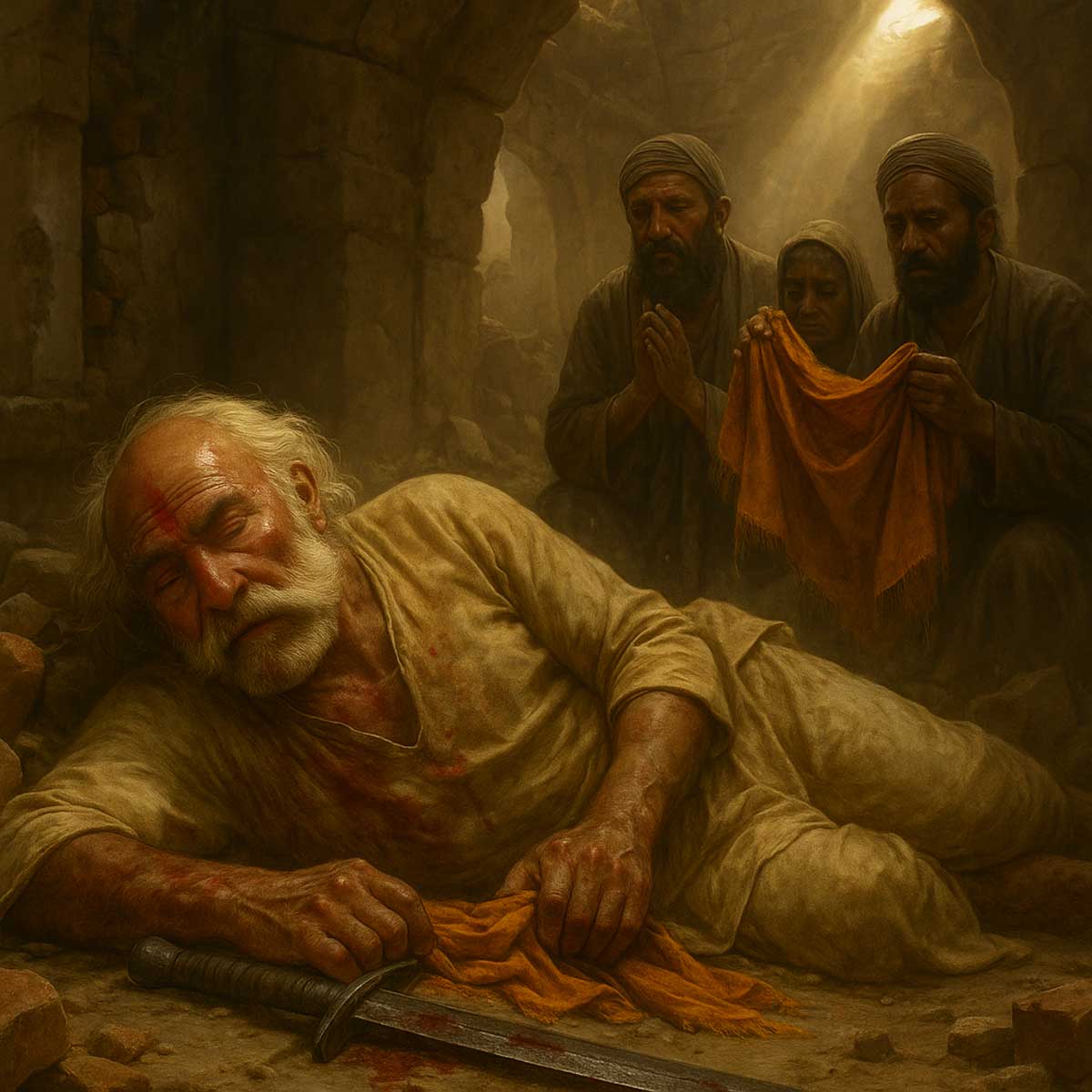 |
 Support Us
Support Us
Satyagraha was born from the heart of our land, with an undying aim to unveil the true essence of Bharat. It seeks to illuminate the hidden tales of our valiant freedom fighters and the rich chronicles that haven't yet sung their complete melody in the mainstream.
While platforms like NDTV and 'The Wire' effortlessly garner funds under the banner of safeguarding democracy, we at Satyagraha walk a different path. Our strength and resonance come from you. In this journey to weave a stronger Bharat, every little contribution amplifies our voice. Let's come together, contribute as you can, and champion the true spirit of our nation.
 |  |  |
| ICICI Bank of Satyaagrah | Razorpay Bank of Satyaagrah | PayPal Bank of Satyaagrah - For International Payments |
If all above doesn't work, then try the LINK below:
Please share the article on other platforms
DISCLAIMER: The author is solely responsible for the views expressed in this article. The author carries the responsibility for citing and/or licensing of images utilized within the text. The website also frequently uses non-commercial images for representational purposes only in line with the article. We are not responsible for the authenticity of such images. If some images have a copyright issue, we request the person/entity to contact us at This email address is being protected from spambots. You need JavaScript enabled to view it. and we will take the necessary actions to resolve the issue.
Related Articles
- Our first true war of independence lie forgotten within the fog of time and tomes of propaganda: Sanyasi Rebellion, when "renouncers of the material world" lead peasants in revolt against British and fundamentalist islamic clans
- 26th December to be observed as Veer Baal Diwas to pay gratitude to martyr sons of Guru Gobind Singh: PM Modi
- "Purify your hearts with the water of love of motherland in national temple, and promise that millions will not remain untouchables, but brothers and sisters": Swami Shraddhanand, who awoke Hindu consciousness
- A troubled childhood - Rajguru: The Invincible Revolutionary
- Unsung Heroine Pritilata Waddedar, Who Shook The British Raj at the age of 21
- Martyrs’ march into the history - Rajguru: The Invincible Revolutionary
- Rana Sanga, the symbol of bravery who defeated Sultan Ibrahim Lodhi and fought Muslim Terrorists for Hindu Existence
- Godse's speech and analysis of fanaticism of Gandhi: Hindus should never be angry against Muslims
- Tirot Singh: An Unsung Hero of the Khasi Tribe who destroyed British with his skill at Guerrilla Warfare
- Jhalkaribai: The Indian Rebellion Of 1857 Who Took on British Forces Disguised as Laxmibai
- Kartar Singh Sarabha - The Freedom fighter who was Hanged at the age of 19 and inspired Bhagat Singh
- "Kuyili - the first suicide bomber of India during freedom struggle": Army commander of queen Velu Nachiyar poured ghee over herself and entered ammunition warehouse of Britishers resulting in an explosion that defeated British
- "Words on a page can hypnotize you if the rhythm is right": “Kalinga narthana” literally means “Kalinga dance” in Sanskrit, referring to a legend in which Shri Krishna, as a young boy, danced on the serpent Kaliya to stop him from poisoning Yamuna river
- "The Forgotten Voice": As Dyer fired 1650 rounds into a trapped crowd & O'Dwyer silenced the press, thousands died at Jallianwala Bagh—only one man, Chettur Sankaran Nair rose alone, took on the Empire and forced the world to confront its colonial cruelty
- United Hindus hoist a 108 feet tall saffron flag at same place where Islamists had uprooted flag earlier: Kawardha, Chhattisgarh
